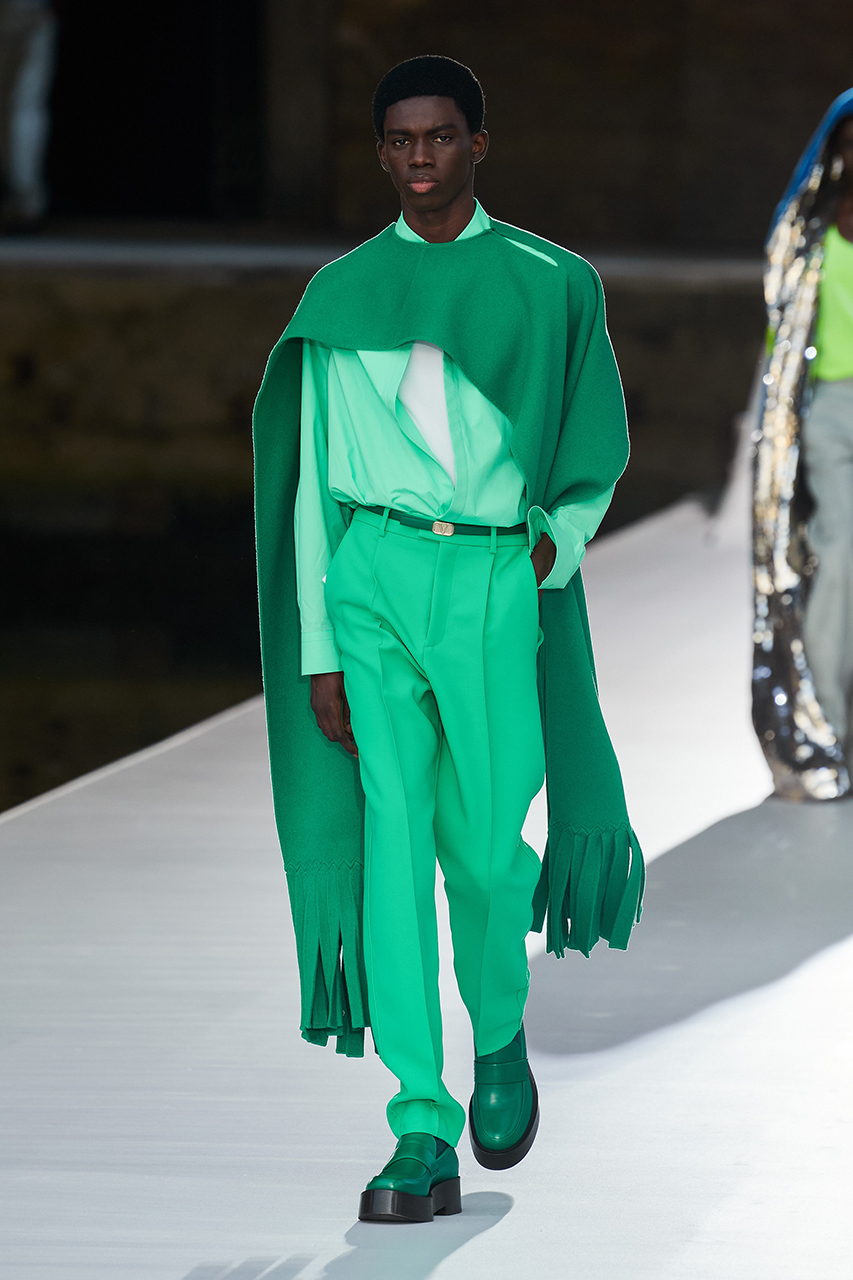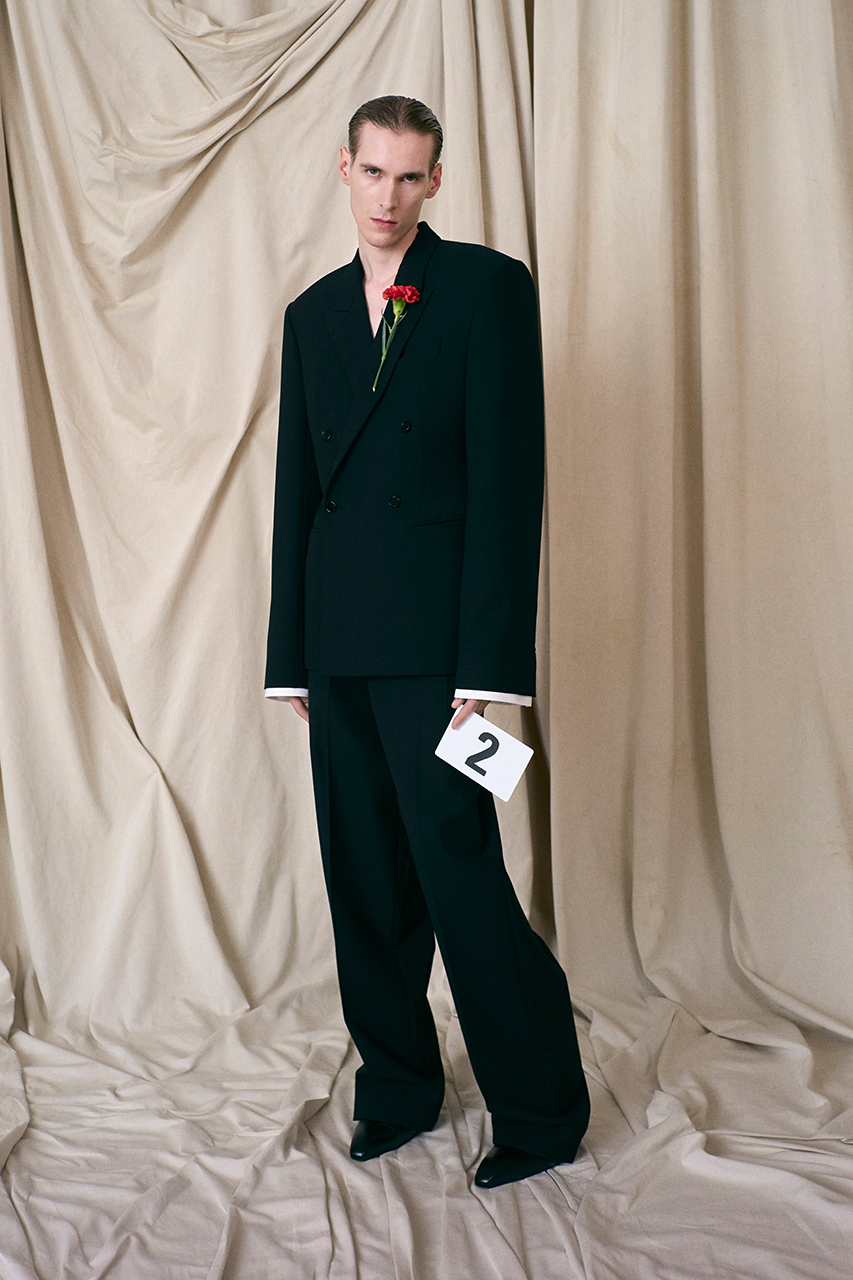But this time, something different was afoot. It came first at the Balenciaga show, where around half of the looks presented by Demna Gvasalia were either men’s or gender-neutral. Shortly after that, at Fendi Couture, Kim Jones punctured his procession of women’s gowns with a range of heavily-worked men’s garments, from embroidered knitwear to embellished suits. John Galliano, too, introduced some romantic menswear looks into his ‘Folk Horror Tale’ at Maison Margiela Artisanal.
And yesterday, at Valentino’s couture presentation in Venice, the men’s looks threatened almost to overshadow the women’s: richly colored separates in almost every shade conceivable, and finished with an extraordinary level of finesse.

This is a new development. While some of the historic houses have dabbled in men’s couture before (Margiela has shown some men’s since Galliano’s arrival, and Valentino has showed some looks in its previous collections), never has so much menswear been featured at once, from so many designers.
Could this point to a new direction for men’s fashion? Certainly, it would offer a sharp contrast to the merch-heavy collections of so much of today’s menswear, which tends to focus almost entirely on printed hoodies, tees, and streetwear-lite clothing. The more elevated, refined precision of these clothes felt like something entirely fresh. And it offers the designers that can compete in couture a chance to flex their heritage and technical skill — after all, every brand can make a hoodie, but not every brand can perfectly cut a cashmere coat.


This is a new development. While some of the historic houses have dabbled in men’s couture before (Margiela has shown some men’s since Galliano’s arrival, and Valentino has showed some looks in its previous collections), never has so much menswear been featured at once, from so many designers.
Could this point to a new direction for men’s fashion? Certainly, it would offer a sharp contrast to the merch-heavy collections of so much of today’s menswear, which tends to focus almost entirely on printed hoodies, tees, and streetwear-lite clothing. The more elevated, refined precision of these clothes felt like something entirely fresh. And it offers the designers that can compete in couture a chance to flex their heritage and technical skill — after all, every brand can make a hoodie, but not every brand can perfectly cut a cashmere coat.

Plus, the menswear market is larger than ever — and built on an increasingly large consumer base of highly affluent younger menswear consumers, with a growing awareness of fashion. It’s safe to assume that a luxury house could find a captive audience for the stratospherically high prices that couture commands (brands are reticent to share the prices of couture pieces, which are always “priced on application”, but reasonable estimates reckon that the starting price of a single piece would be around $40,000 USD).
On the other hand, it’s not a guaranteed win. Bespoke tailoring, which is often touted as menswear’s nearest approximation to couture (focussing as it does on custom, made-to-measure garments), is hardly enjoying a surge of popularity: as recently as last September, Savile Row tailors were warning that their businesses were on the brink of closure. But couture allows – and even encourages – a greater level of exuberance and flashiness than fine tailoring, sitting it more in step with the current mood of menswear: Balenciaga’s canary-yellow “Big Bird” coat is far more likely to appeal to the Instagram generation than a stuffy tweed suit.
The actual commercial significance of couture remains a murky world, and the few houses that are officially designated as couturiers tend to keep their financial details private – both Balenciaga and Valentino declined to share any specifics about the size of their men’s couture client base. So it remains to be seen if this new development will continue and flourish. But if it means that luxury houses begin investing in real innovation and risk-taking within the menswear sphere, then it’s a welcome evolution.
The actual commercial significance of couture remains a murky world, and the few houses that are officially designated as couturiers tend to keep their financial details private – both Balenciaga and Valentino declined to share any specifics about the size of their men’s couture client base. So it remains to be seen if this new development will continue and flourish. But if it means that luxury houses begin investing in real innovation and risk-taking within the menswear sphere, then it’s a welcome evolution.

No comments:
Post a Comment